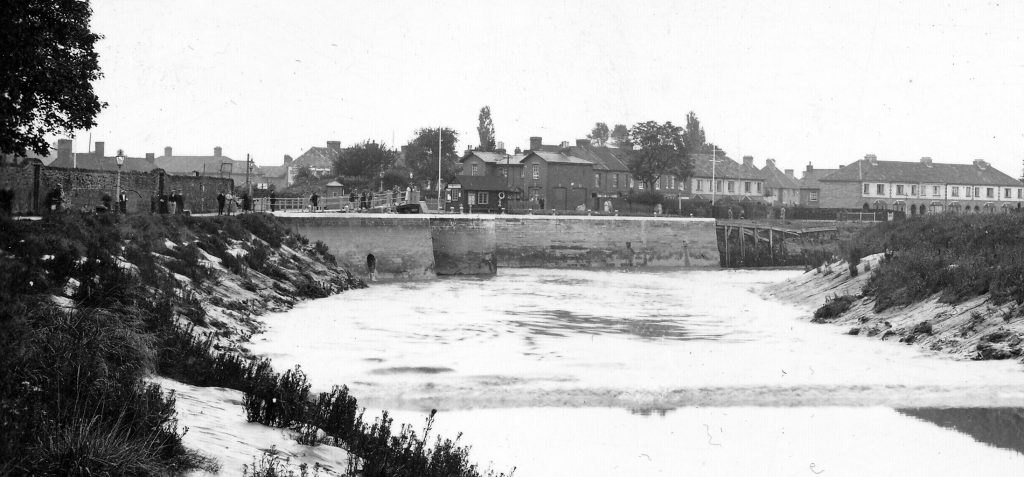(recorded as Samuel Bryant in St Mary’s Bridgwater burial register.) buried on 31st October 1851 aged 17 years.
by Jillian Trethewey, Hilary Southall and Clare Spicer 16/10/2021.
The tragic loss by drowning of three young men on Saturday, 25 October 1851, was serious enough to be reported in the Wells Journal, even though the accident happened at Bridgwater:
“It appears that the deceased, with three other men, were in a barge, which was full of coal, but not overladen, which had entered the basin to remain till the bore head passed. About half an hour after the tide had come up, they left the basin to enter the river, but in doing so the current came upon them so rapidly as to force the boat back against the wall and completely upset it. All the six men were precipitated into the water and the boat sank. Two of the men escaped by swimming and another was picked up by a vessel, but Furber, Trott and Bryer were unfortunately drowned.”
All three of the men who drowned were agricultural labourers living in Martock, which is a small Somerset town about two and a half miles east of Kingsbury Episcopi and the River Parrett. Samuel Bryer was born in Martock and baptised on 8 March 1835, son of William and Elizabeth Bryer. William was a tailor of Martock. In the 1851 census, Samuel and his brother-in-law Thomas Furber were both living in the Bryer household. Thomas was married to Sarah Bryer, elder sister of Samuel. They had two young children. Amos Trott was born about 1835 and was also from Martock.
Thomas was baptised at Kingsbury Episcopi on 25 April 1824, the son of John Furber, tailor, and his wife Ann. Thomas had been arrested in 1847 and spent a short time in Wilton gaol in Taunton. He was 5’ 5 ¼”, with a fresh complexion, blue eyes and brown hair.
The newspaper does not say whether the men were working as bargemen, or as labourers loading and unloading the coal, or whether they were just wanting to get home. The names of the three men who survived the accident are not stated, but perhaps those who were able to swim to safety were the more experienced boatmen, or just lucky.

The Tidal Basin where the accident occurred was between the Bridgwater floating dock and the River Parrett. Whether the barge had been loaded with coal in the floating dock or quayside along the river in the town, the Tidal Basin would have been calmer waters while the bore head, or tidal wave, passed. The tidal wave travels upstream against the river’s current, causing significant turbulence. The water level in the river drops again as the tide rushes out, which can be just as dangerous, as on this occasion.
Police Superintendent Lear and his constables found the bodies of Thomas Furber and Amos Trott in the river the next day. An inquest was held on the Monday morning and a verdict of “Accidental Death” was returned. Thomas and Amos were buried in Kingsbury Episcopi and Martock respectively. Samuel’s body was not found until Wednesday afternoon and he was buried in Wembdon Road Cemetery, in a Pauper's plot with several other people.
Sources:
Murless, Brian J. Bridgwater Docks and the River Parrett. Somerset County Library 1983.
Parish registers and census records.
Wells Journal 1 November 1851 digitised on the British Newspaper Archive.
Wilton Gaol Description Book 1841-1853, Somerset Archives and Local Studies.
